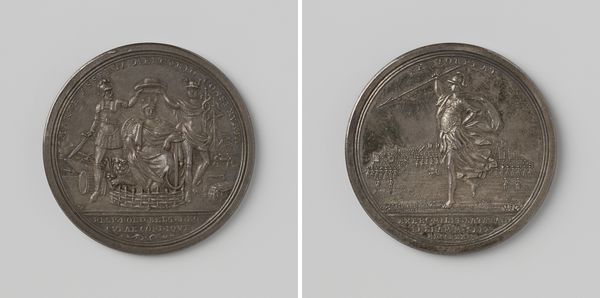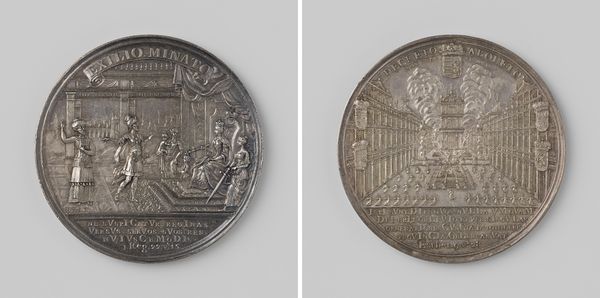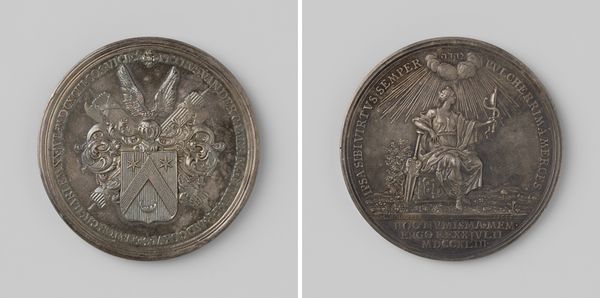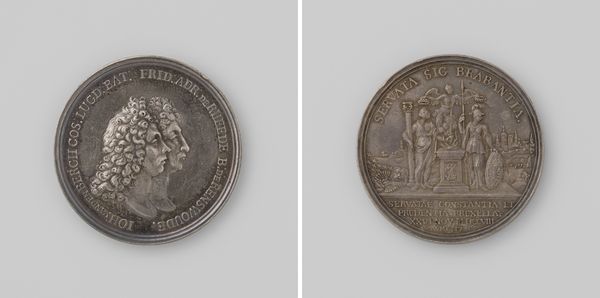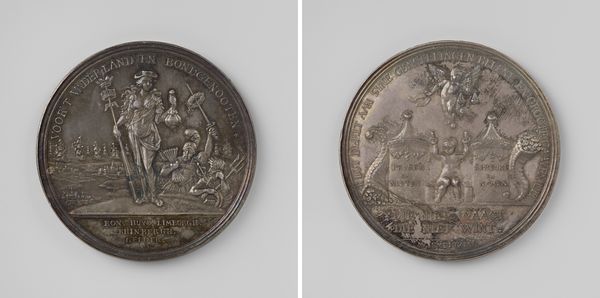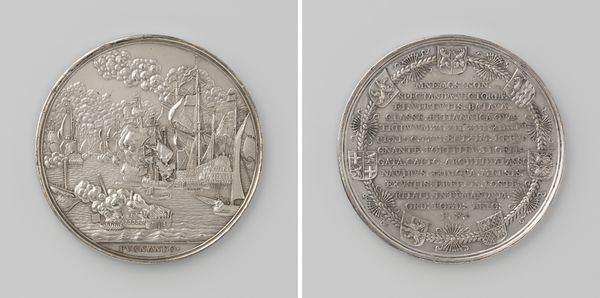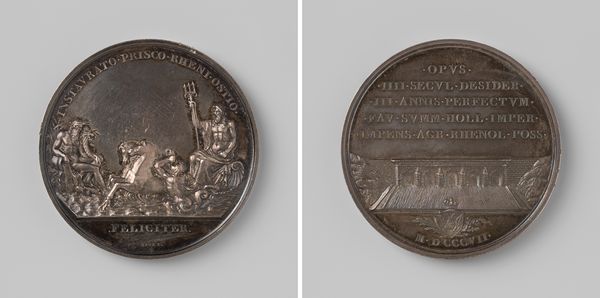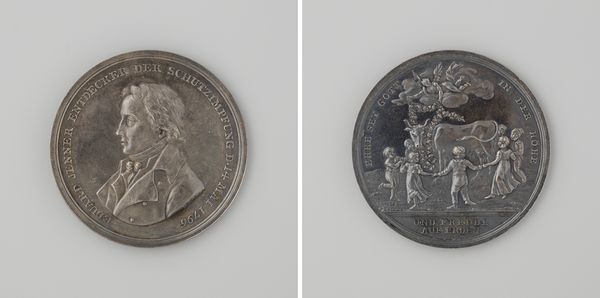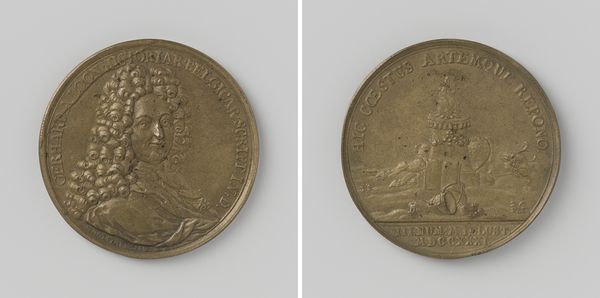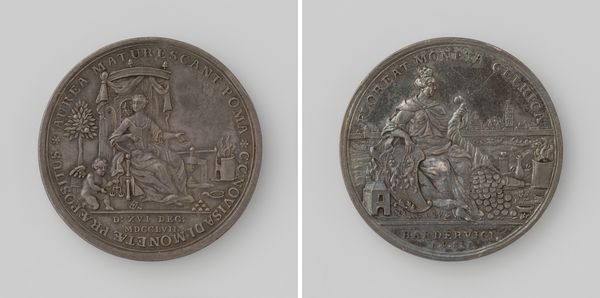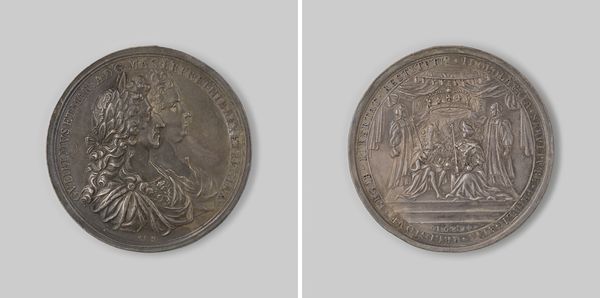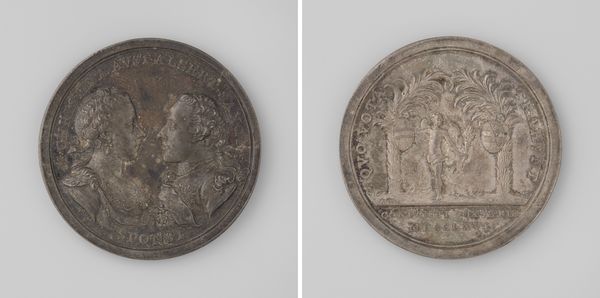
print, metal, relief, sculpture
#
portrait
#
dutch-golden-age
# print
#
metal
#
sculpture
#
relief
#
sculptural image
#
sculpture
Dimensions: diameter 10.9 cm, thickness 0.6 cm
Copyright: Rijks Museum: Open Domain
Editor: This medal depicts Rembrandt van Rijn’s "The Night Watch" and was made in 1873, likely as a print in metal or as a sculptural relief. I am fascinated by how such a grand painting has been translated into such a compact form, but it appears quite static. How can one properly 'read' this piece from a formal perspective? Curator: Let us consider first the division of pictorial space. Notice how the medal presents two distinct, self-contained areas, creating a dialogue between portraiture and narrative. The composition compels a comparative analysis of representational strategies, wouldn't you agree? Editor: Definitely! On one side, we have a very defined profile portrait, seemingly still and regal. Whereas the other is, obviously, an interpretation of his famous painting, "The Night Watch," in condensed format. Curator: Observe the linear quality defining forms within "The Night Watch" segment; it serves not to replicate painterly values, but rather to translate the original's dynamism into graphic terms. Notice the bas-relief technique. How do the highlights and shadows play out in conveying spatial depth, given that tonal gradations are effectively absent? Editor: That’s interesting. It’s less about shadow and more about the physical depth of the carving that defines where light catches, so it emphasizes certain planes over others. I guess that draws our attention to the physical surface of the artwork itself and what it means to translate painting to sculpture, in essence. Curator: Precisely. What, then, does the inherent flatness of the metalwork communicate, vis-à-vis our expectations when viewing a photograph or other reproduction of a Rembrandt painting? Editor: Hmm. It removes any pretense of realistic depth; the medium itself makes it apparent that it is a copy, or echo, rather than any attempt to capture the full realism and detail. Thanks! I wouldn't have noticed that without you pointing out its linear elements. Curator: It's rewarding when analytical observation enriches aesthetic appreciation! The materiality shapes our engagement fundamentally, wouldn’t you agree?
Comments
rijksmuseum about 2 years ago
⋮
Rembrandt van Rijn is regarded as the Netherlands’ most important painter. Medals relating to him have been made time and again, often when his year of birth or death is commemorated. Throughout his life the sculptor Piet Esser (1914-2004) was fascinated by Rembrandt, in particular the artist’s head. He made numerous portrait medals, each one different, modelling them by hand, after which he fired them in clay or had them cast in bronze.
Join the conversation
Join millions of artists and users on Artera today and experience the ultimate creative platform.
